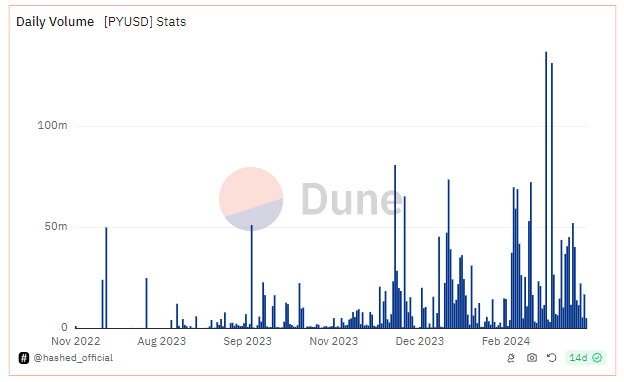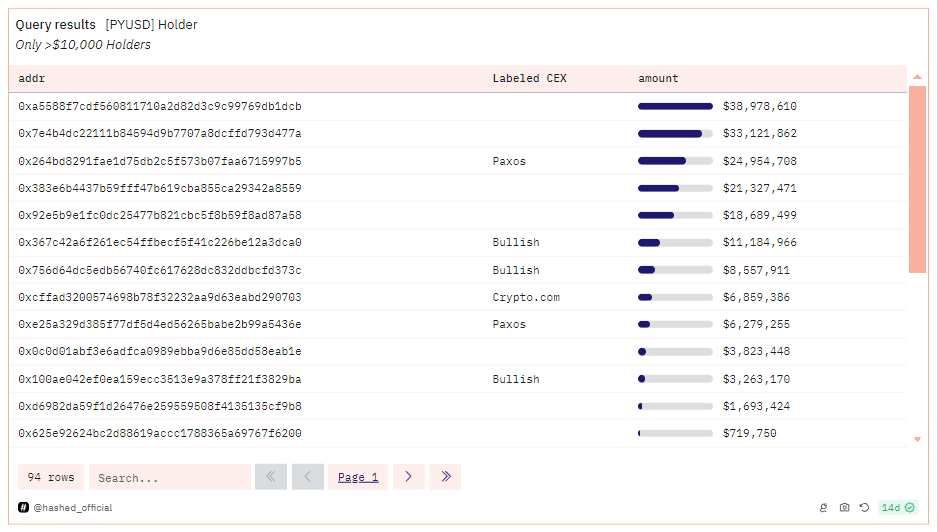PayPal is offering a new service in the USA that allows its customers to make convenient cross-border money transfers using the PYUSD stablecoin, launched by the same company in August 2023.
By using the Xoom app, US citizens will be able to quickly convert their PYUSD into USD and then send the amount to over 160 different countries around the world.
Let’s see all the details below.
Summary
PayPal expands the use of stablecoins in cross-border payments in the USA
PayPal, a leading company worldwide in the field of digital payments, is launching a new service supported by its electronic remittance provider Xoom that allows US citizens to make cross-border payments in stablecoin.
Since yesterday all PayPal customers can convert PYUSD, the company’s stablecoin created in August of last year, into USD through Xoom, and conveniently send money abroad to friends and relatives in over 160 different countries.
This new feature is completely free for USA users:
Eligible U.S. customers can now convert PayPal USD to USD to fund transfers on Xoom, PayPal’s cross-border money transfer service. This new option allows eligible U.S. Xoom users to send money to friends and family abroad with no Xoom transaction fees. https://t.co/cFbDHffe9U pic.twitter.com/YHEMU9wwKp
— PayPal (@PayPal) April 4, 2024
PayPal, a giant in the online transfer market, seems confident that stablecoins will be increasingly used to simplify and make international payments more efficient and that the whole world will embrace this kind of innovation.
Currently, according to a report from the World Bank, the average cost for a payment of 200 dollars between different countries is 6% of the total.
The same company stated that the world is moving towards a greater use of cryptocurrencies, given its objective convenience:
“Allowing US Xoom users the ability to fund cross-border money transfers using PYUSD is based on our goal of promoting mainstream adoption of cryptocurrencies”.
This is not the first time we see stablecoins associated with cross-border payments: in a recent study by Juniper Research, it was predicted that by 2028 the value of cross-border payments will reach a share of 73% compared to the total payments made in stablecoin, becoming the predominant use case.
While the whole world is moving towards a deeper integration and penetration of cryptographic tokens within the various layers of international monetary systems, PayPal is trying to increase adoption for its stablecoin PYUSD.
At the same time, Ripple, a well-known company that manages a network dedicated to electronic remittances, is also aiming for a new stablecoin that will soon be launched on the XRP Ledger and on the Ethereum blockchain.
The market of cryptocurrencies anchored to the value of fiat currencies, could reach a valuation of 2.8 trillion dollars within the next 4 years.
The PYUSD stablecoin market
PYUSD, cryptocurrency launched by PayPal in the USA in August 2023, has already achieved excellent numbers in the stablecoin market, ranking 13th in the DeFiLlama ranking, with an estimated market capitalization of 188 million dollars.
Since its creation until February 2024, PYUSD has recorded a strong growth trend in terms of newly minted supply, reaching a peak of over 310 million units and then slipping below the 200 million threshold in the last month.
Despite the recent downsizing, PayPal’s stablecoin remains a significant asset, which has been able to carve out a place in the decentralized finance sector in a relatively short time. decentralized finance

It is also very interesting to note how from the beginning of the year onwards PYUSD has recorded a strong increase in the number of transactions, parallel to a significant increase in trading volumes.
Regarding the number of txs, we can say that these have doubled from the end of December to today, going from a daily average of 250 transactions to the current 500 approximately.
Furthermore, between the end of February and the beginning of March, on two different days PYUSD was traded with volumes of over 100 million dollars, reaching a significant record.

Beyond the excellent achievements, PYUSD also presents some vulnerabilities to improve. One of these is represented by the distribution of the supply on various cryptographic addresses.
This stablecoin unfortunately appears excessively centralized in the wallets of a few actors: consider that without taking into account the issuer Paxos, the top 5 holders of PYUSD hold over half of the coin’s supply.
In a broader view, we can instead see that the first 10 holders manage 90% of its supply, while the remaining 10% is divided among tens of thousands of wallets.

 en.cryptonomist.ch
en.cryptonomist.ch
